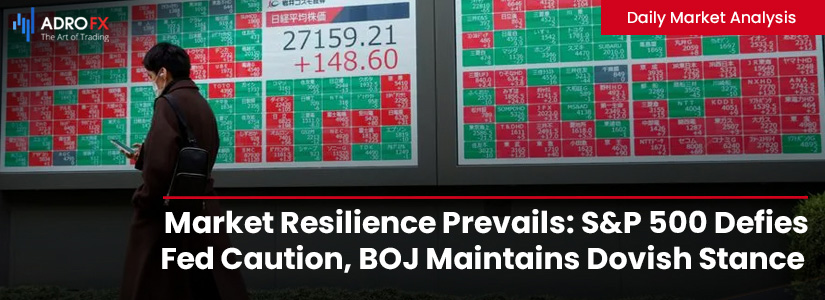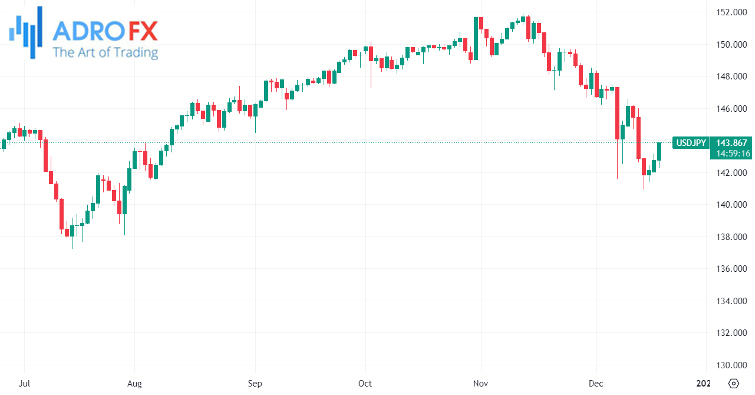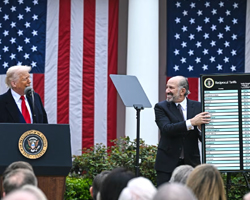Market Resilience Prevails: S&P 500 Defies Fed Caution, BOJ Maintains Dovish Stance, and Gold Faces Headwinds | Daily Market Analysis

Key events:
- Japan - BoJ Interest Rate Decision
- Japan - BoJ Press Conference
- Eurozone - CPI (YoY) (Nov)
- USA - Building Permits (Nov)
On Monday, the S&P 500 defied attempts by Federal Reserve officials to temper expectations for imminent rate cuts. The Dow Jones Industrial Average remained flat, the NASDAQ Composite climbed 0.61%, and the S&P 500 index rose by 0.5%.

Despite efforts from Fed officials to provide a cautious outlook, the S&P 500's gains brought it within 1.2% of its record closing high of 4,796.56 observed in January 2022. Chicago Fed President Austan Goolsbee expressed confusion over the market's response to last week's Fed meeting, emphasizing that policymakers do not speculate on specific future policies. Fed President Loretta Mester also pushed back, asserting that the focus should not be on when to reduce rates but on determining how long monetary policy needs to remain restrictive for sustained and timely inflation.
The comments echoed the sentiments of New York Fed President John Williams, who clarified that interest rate cuts were not currently under discussion. Rate-cut expectations surged after Fed Chairman Jerome Powell acknowledged that the discussion of rate cuts had entered the picture.
Goldman Sachs, just a month after setting a 2024 target for the S&P 500, upgraded its year-end forecast to 5,100. The revision cited the Federal Reserve's dovish pivot, lower consumer prices, and anticipated declines in real yields as contributing factors.
Meanwhile, Apple, which reached a record high on Friday, experienced a decline on Monday after announcing a pause in the sales of its Apple Watch due to a long-standing patent dispute with Masimo over the blood oxygen feature. In October, the International Trade Commission upheld a ruling that the technology used in the Apple Watch infringed on Masimo's patents. President Joe Biden has until December 25 to veto the ITC's judgment, potentially leading to a ban on imports of the latest Apple Watch versions in the US Apple, however, stated it was taking preemptive steps to comply should the ruling stand.

On Tuesday, the Bank of Japan (BOJ) adhered to widely expected measures by maintaining interest rates in negative territory and committing to continue its yield curve control (YCC) measures to bolster Japanese economic growth. The BOJ retained short-term interest rates at negative 0.1% and affirmed its commitment to asset purchases and monetary stimulus measures.
Under the YCC policy, the BOJ will continue to permit 10-year yields to fluctuate in a range of negative 1% to 1%, a slight modification from its October meeting, indicating a willingness to allow more flexibility in yields, potentially exceeding the 1% upper limit.
Despite making three adjustments to the YCC policy in the past year due to heightened risks from inflation and sluggish wage growth, the BOJ maintained an ultra-dovish stance, emphasizing the need for continued economic support amid growing challenges.
The lack of cues for monetary policy tightening in 2024 disappointed traders, causing the Japanese yen to decline by 0.5% after the rate decision.

The BOJ anticipates that the consumer price index inflation will persist above its 2% annual target in fiscal 2024, although the pace of price growth is expected to moderate. Underlying CPI inflation is projected to gradually converge towards the 2% target.
Concurrently, the Australian dollar is receiving support from the recently disclosed minutes of the Reserve Bank of Australia (RBA) meeting. Despite the RBA maintaining its current interest rate, the meeting minutes reveal a continued emphasis on addressing inflation, with the potential for additional rate hikes not ruled out. Additionally, oil prices remain elevated due to recent vessel attacks in the Red Sea, causing disruptions in oil supplies and contributing to the evolving dynamics of the market.

In the broader financial landscape, gold prices experienced a slight decline on Tuesday following remarks from several Federal Reserve officials downplaying the likelihood of an imminent dovish pivot by the central bank.

While gold remained above the coveted $2,000 an ounce level, it edged towards the low-$2,000s in response to less dovish signals on US monetary policy. The resilience of the dollar, rebounding sharply from four-month lows, also exerted downward pressure on gold prices.









